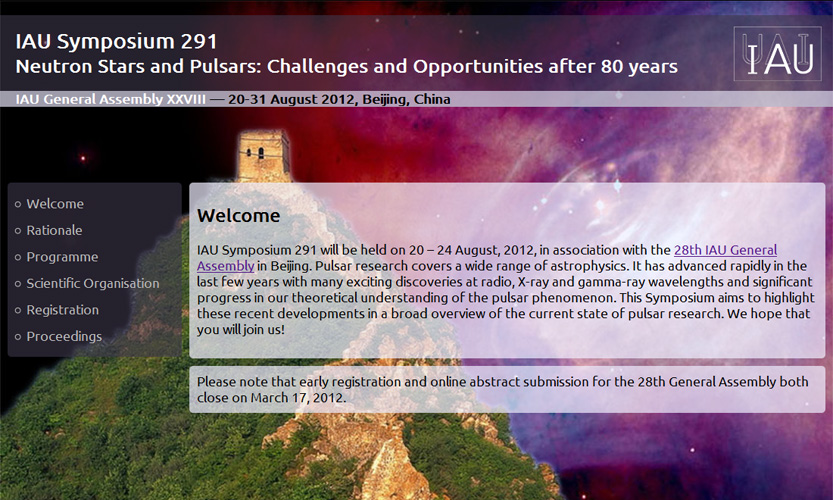Daily Image
20-08-2012IAU Symposium 291 -- Neutron Stars and Pulsars: Challenges and Opportunities after 80 years
| Submitter: | Joeri van Leeuwen |
| Description: | Many new developments continue to make pulsar astrophysics a very exciting field, and IAU Symposium 291, co-organised by ASTRON astronomer Joeri van Leeuwen, is an ideal opportunity to bring new results and ideas together at the 2012 IAU General Assembly in Beijing. Abstract submission is open until March 30. The year 2012 is significant for neutron-star and pulsar science, marking the 80th anniversary of both Chadwick's discovery of the neutron and Landau's idea of stars formed of matter at nuclear density. With the discovery of pulsars by Hewish and Bell, these ideas were finally given a firm observational basis. Since that time, the topics of neutron-star and pulsar science have grown enormously. From the original radio pulsars with periods of order one second, we now have X-ray and gamma-ray pulsars, magnetars, millisecond pulsars and long-period transient pulsars. With their high density, rapid rotation, very strong magnetic fields, ultra-relativistic plasmas and high-energy emission, pulsars are a wonderful laboratory for study of high-energy astrophysics and particle physics. Their ultra-stable pulse periodicities and common occurrence as members of binary systems makes them outstanding probes of gravitational theories. They offer the exciting prospects of the direct detection of gravitational waves. The topics chosen for this symposium reflect the great diversity of neutron-star and pulsar research and the many manifestations of neutron stars which have become apparent since these initial discoveries and ideas 80 years ago. The planned program also reflects the huge advances made in the last year or so with new discoveries from radio telescopes and especially with the Fermi Gamma-ray Space Telescope. It also looks forward to developments in the next few years with the completion of large new instruments such as LOFAR, and the Chinese 500-m FAST radio telescope. |
| Copyright: | IAUS291 website; D. Manchester and M. Keith |
| Tweet |  |
